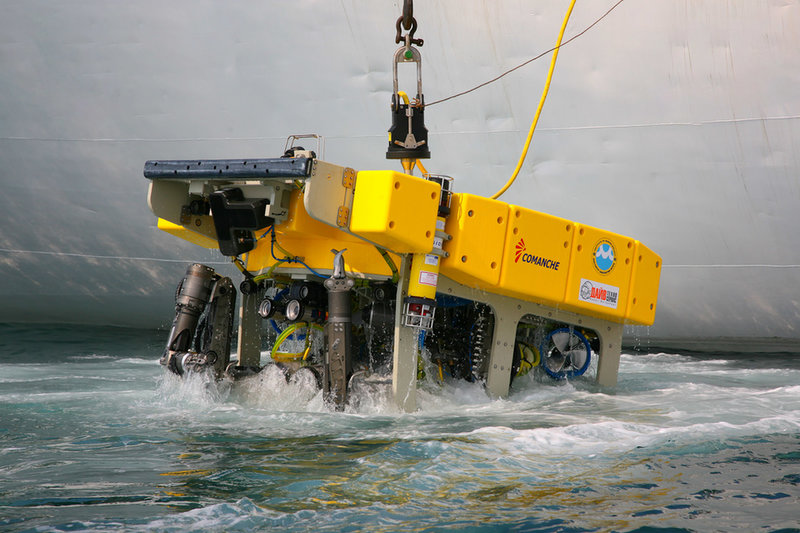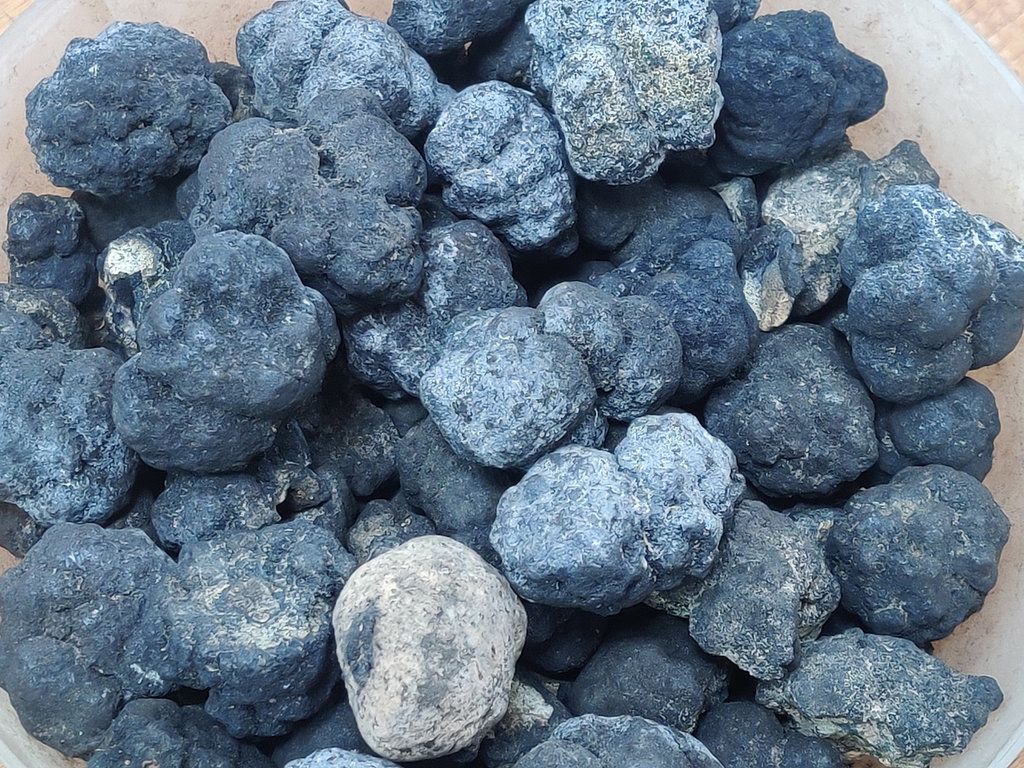Feature
Out of the deep: can technology improve the impacts of the energy transition?
Deep-sea mining’s environmental impact lies at the heart of its controversial nature. Andrew Tunnicliffe speaks with Loke Metals and Minerals’ CEO Walter Sognnes to find out how technology proposes to abate its impact.

Remote operated vehicles give oil and gas companies an advantage. Credit: Victor Ivin via Shutterstock
By July 2025 we should know what mining regulations will look like for those seeking to mine the seabed of some of the world’s deepest oceans. In July this year a session of the deep-sea mining regulator, the UN affiliated International Seabed Authority (ISA), was held to determine those rules, but its conference concluded without doing so.
Instead the highly anticipated assembly, dogged by fiercely held opposing views, concluded with a further two-year delay to finalising regulations. It was, perhaps, no surprise as the prospect of mining the ocean floor has long been vehemently discussed, eliciting strong views on all sides.
A growing list of nations are opposed to the idea. Those in support argue that if the world is to succeed with its energy transition, it must look to unleash the wealth of natural resources beneath the high seas. These come from polymetallic nodules, small rocks typically containing manganese, nickel, copper, cobalt and other rare earth minerals.
“They [nodules] are formed by hydrogenic precipitation. The metal precipitates out of the ocean water, a suboxic sedimentary diagenesis from the sediment that they form on,” explains Walter Sognnes, co-founder and CEO of Norway-based Loke Metals and Minerals. He likens the process to the formation of pearls over millions of years. Established in 2019, Sognnes describes his company as developing “differentiating and sustainable technology” to explore and extract seabed minerals in “the most environmentally friendly way”.
The known technologies in a new field
One of the largest points of contention lies in the environmental impact of deep-sea mining, and what is known about the poorly-understood nature of the seabed. In 2022 the International Union for Conservation of Nature (IUCN), also a member of the ISA, said research suggested the practice “could severely harm marine biodiversity and ecosystems,” adding there was still not the knowledge and means to implement protections and mitigate risk. “Deep-sea mining will stir up fine sediments on the seafloor, creating plumes of suspended particles,” it warned. “This is exacerbated by mining ships discharging wastewater at the surface.”
Concerns include disturbance of the seafloor which could, argues the IUCN, result in the permanent loss of species and the fragmentation or loss of ecosystem structures and function. Alongside this, plumes of suspended sediment particles, exacerbated by mining vessels discharging wastewater at the surface, and noise, vibrations and light pollution could have far-reaching implications for marine life.
Loke’s deep-sea mining extraction operation will involve three elements. On the surface of the water is a production and storage vessel, similar to a deep ocean drilling vessel. However, this vessel will not drill, but instead will house a water separation and modular storage system. It, says Sognnes, is a vessel that already exists, using off-the-shelf technology. Then there is the riser, running from the vessel to the nodule collector, again akin to those used in the oil and gas industry. This will use a power supply to lift nodules and liquids from the seabed to the surface.
Although there are several different ways this can be done, Sognnes says his company will likely use what he calls “champagne technology”: “We will probably go with airlift – also used in the oil and gas industry – where you inject air into the riser below the vessel. This air expands. As it rises it creates a vacuum and natural lift of the remaining lower part of the riser contents. It’s a well-established technology.”
Finally, using a remotely-operated vehicle to mechanically collect and feed the nodules into the riser, it is brought to the surface. Sognnes believes this is a different approach to that being taken by others who are favouring to largely start from scratch: “[Our technology], we think, is almost there – we just need to adjust it,” he explains. There are challenges though, unrelated to the technology: “But then, how do we minimise the footprint of the nodule collection?”
What are the concerns?
As well as the countries to have voicing environmental concerns, environmental groups, a multitude of industry bodies, researchers and the UN High Commissioner on Human Rights have joined the growing chorus of opposition. Some manufacturers have committed to not using minerals sourced from the ocean floor, including carmakers BMW, Volvo and Renault, and technology developers like Samsung among others.
Sognnes accepts that plumes are a concern, caused by both nodule extraction and the disposal of wastewater, but says more recent modelling has given evidence that these plumes do not move as far as was first feared. Nevertheless, he is conscious that any element of sediment displacement may impact marine life and the wellbeing of the oceans.

The nodules sought by deep-sea miners. Credit: Pallava Bagla/Corbis via Getty Images
This is why, he says, Loke is opting for a different approach. Instead, his company is developing a technology he likens to a potato picker. “We are going for a rotating mechanical collection, where we pick up the nodules and not the sediment. Thereby we minimise the plume behind the vehicle and have no need to return water with sediment, because there is so little sediment in the cargo,” he says. Loke now hopes to close the knowledge gap surrounding marine life and the impact these types of operations might have.
But, Sognnes says, any discussion must recognise that we do not have enough mineral resources for the future. “We need to accept that,” he says. “If we agree that more minerals are needed, and that in the near term you have two ways of getting them – terrestrial or deep-ocean mining – and then we decrease future demand by recycling, we can start there. We need to go into the deep ocean and see if we can do this [source resources] better.”
Deep-sea mining against onshore excavation
According to the IUCN, to date 31 licenses have been issued to explore the seabed by the ISA – although it remains uncertain as to when these operations will actually begin. Currently the main geographical focus is the vast 1.7 million square miles of ocean floor between Hawaii and Mexico, the Clarion-Clipperton Fracture Zone. Thanks to its acquisition of UK Seabed Resources from Lockheed Martin UK earlier this year, Loke has two deep sea mineral licences there. A “gamechanger” says Sognnes, adding that having the technology is one thing, but having access to resources is the next stage.
Unlike terrestrial mining – where geology determines the location of operations – extracting from the seabed is almost universal. This, Sognnes offers, has the potential to address the energy transition and secure the minerals needed for the future. It also means the geopolitical constraints we see right now might one day be at least mitigated, if not eliminated. That proposition raises some questions for today’s terrestrial mining companies: do they get involved now while the regulatory and technological challenges remain unclear, or wait and potentially risk missing out?
Sognnes believes the parallels between deep-sea mining and the oil and gas industry, which has shown itself to be open to diversification, are clear and potentially already give them the competitive edge. In his view, oil and gas stakeholders are watching to see how knowledge, regulation and technology evolves in coming months and years. As these become clearer, there is likely going to be a growing appetite among oil and gas majors, potentially challenging the future development of traditional mining.
Looking to the future, Sognnes accepts that deep-sea mining will have an environmental impact. However, he remains confident that can be minimised, even limited to a small area of the ocean where operations are taking place, rather than the vast repercussions some have predicted, relatively speaking. “I just think that you need to have the smartest heads and the best technology... We need to see if we can make this a better alternative than new terrestrial mines in, say, Indonesia, because they also have an impact on nature. This, we believe, is a better solution for many reasons.”
If regulations are agreed, technology is developed, and those environmental issues are addressed, the ocean has the potential to provide an abundance of minerals and support hundreds of thousands of jobs, at least. Together these must surely be a call to action for traditional mining companies which, thus far, have been less keen to explore.